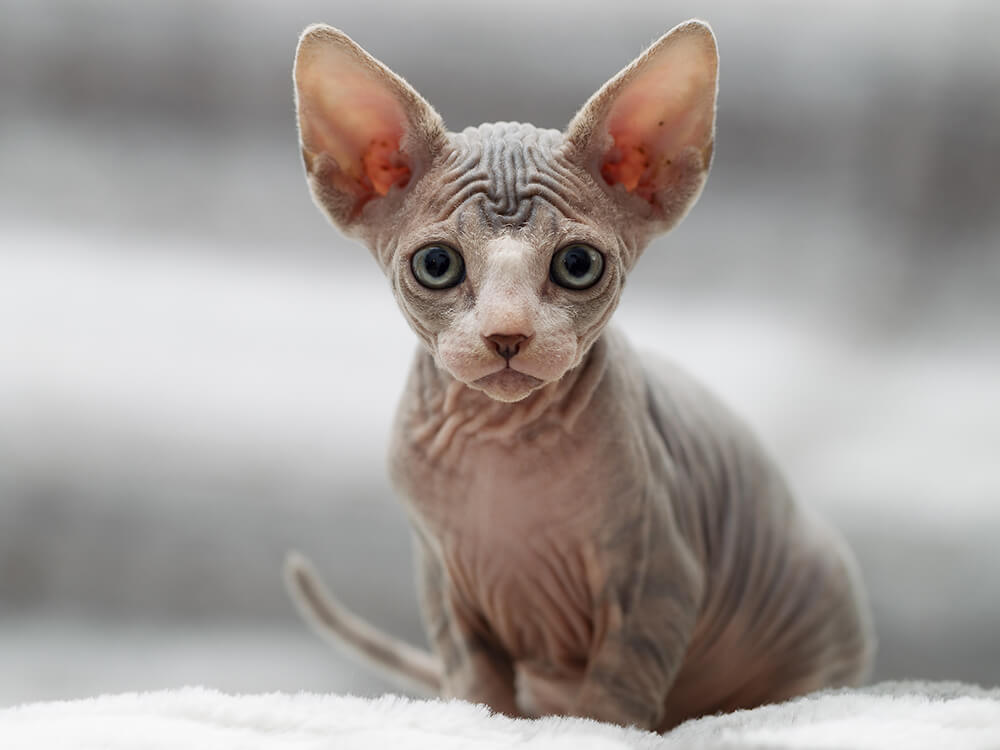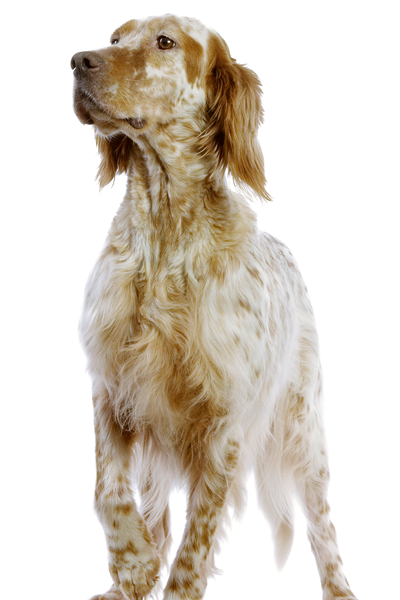Not the breed you're looking for?
Click Here
Featured Story

In smaller apartments, the right feline companion can make a world of difference. Explore 14 small cat breeds tailored for cosy living, and let your … [Read More...]
The English setter is the oldest gun dog in the world that originated in England in the fourteenth century. It is a medium-size dog that weighs 45–80 pounds and stands 61–69 centimetres at the withers. Gentle but at the same time strong-willed, this mischievous dog breed is used to hunt games such as quail, pheasant, and grouse. The English setter is people-oriented and very sociable, making it a popular choice for a family pet.
Are you looking to buy an English setter? Before you decide, learn more about its background.
The English setter is one of the oldest hunting dogs in the world dating back to fourteenth-century England. It was often called ‘setting doggies,’ which is an ancient term used for dogs that set or point upland game birds. There is evidence to suggest that the English setter was a cross from the Spanish pointer, English springer spaniel, and large water spaniel.
In the seventeenth century, the English setter had become widely popular and established on British estates. The modern English setter was developed by Englishman Edward Laverack and Welshman R.L. Purcell Llewellin in the late 1800s, in the hopes of creating a gentle and companionable dog breed.
Today, the English setter has a unique appearance, with a sculpted head, athletic body, and a feathery tail. This elegant dog is still one of the favourite dog breeds in the UK and the world because of its kind and gentle nature.
An epitome of grace, strength, and stamina, the English setter boasts of an elegant, symmetrical, and athletic build. It is medium-sized and slim, weighing 45–80 pounds and standing 61–69 centimetres at the withers. It has a long head and a definite stop. Its muzzle is square and moderately deep. Depending on the dog's coat, the nose is either black or liver. The English setter has dark eyes, either hazel or dark brown, that are bright and expressive.
The English setter’s trademark is its speckled coat that comes in a variety of colours such as blue, lemon, orange, or brown, whilst the base of the coat is white. The coat is tight and lies flat without any wooliness or curls. It also sports feathering (longer fringe of hair) on the ears, chest, belly, legs, tail, and underside of the thighs.
To keep its stunning coat, the English setter must be brushed at least thrice a week or even daily. Bathing it every six weeks is also recommended to avoid that doggie smell. Trim its hairs every six weeks to maintain its neat appearance. If you're not confident to do the trimming yourself, take your English setter to a professional groomer. Don't forget to brush its teeth at least twice a week, trim its nails regularly, and clean the ears with a cotton ball moistened with a vet-approved solution.
The English setter is described as a ‘gentleman by nature.’ It has the mildest of manner of the setter breeds (Irish setter and Gordon setter). The English setter is very sociable and must not be left alone for longer periods of time, else it becomes destructive. However, it can also be strong-willed and mischievous. It is smart and can be trained to perform tasks, but often its natural hunting bird instinct gets in the way of its focus.
Outdoors, it is an active and highly energetic dog, but it tends to have lower energy when inside the home, often content to be a couch potato or a lap dog. Still, the English setter must be given lots of exercises and mental stimulation. When it comes to children and other pets, the English setter has a strong affinity towards children and also gets on well with other animals if introduced at a young age. This dog breed rarely shows any aggressive behaviour and remains to be a popular choice for people with young families.
A typical serving for an adult English setter is two to three cups of high-quality dry dog food per day. Regardless of the recommendations you get from online sources, nothing beats consulting with a veterinarian. Be sure to double-check with a vet with regard to the nutritional requirement of your English setter, especially about its calorie needs.
As a rough guide, here’s the typical calorie needs of a 65-pound adult English setter per day:
An English setter will need a high-protein diet to help build strong muscles and joints. It is also highly recommended to feed it with brown rice and a good mix of vegetables. If you decide to feed it with commercial dog food, make sure that the ingredients do not include wheat and corn, which are fillers and don't provide much nutritional value.
When properly cared for, an English setter can live up to fifteen years. However, like any dog breed, it is also known to suffer from a few health issues specific to its breed. The English setter is predisposed to health issues, which include skin problems and hotspots, elbow and hip dysplasia, thyroid problems, and even blindness.
The English setter is a gun dog that requires lots of exercises to keep it healthy and happy. It's not well suited to live in a city apartment as it thrives in a home with plenty of room to run such as a big yard or even in a farm. This dog breed enjoys all physical activities, from long walks (at least two hours) to running and playing a game of chase. Although it can be a couch potato when indoors, this dog breed actually leads a more active life, so it is not a good choice for people with sedentary lifestyle.
If you are interested in purchasing an English Setter, be ready to pay between £450 and £1000 for a well-bred pedigree puppy. Pet insurance is another cost to factor in if you want to offset some expenses on health emergencies and accidents. Insuring an English setter will set you back a monthly premium of £25 for a basic cover and £50 for a lifetime cover.
Good nutrition is important in maintaining your dog’s health and minimising visits to the vet. Feeding your English Setter high quality dog food can set you back another £40-£50 a month. Routine checks and preventive care including neutering and spaying can cost £1000 annually. This does not include major treatments and confinement in case of health emergencies.
You also need to factor in the basic accessories and equipment that can cost up to £200 initially. These include food bowls, collars and leads, bed, grooming kit, and toys. On average, caring and raising an English Setter will cost £80 to £120 a month.

Are you sure the English Setter is the best breed for you? Take the Pet Breed Selector Quiz to find your perfect breed match.
Dog Breed Selector QuizWould you rather get a different popular dog breed recognised by the Kennel Club? Try our Pet Finder for other breed suggestions.